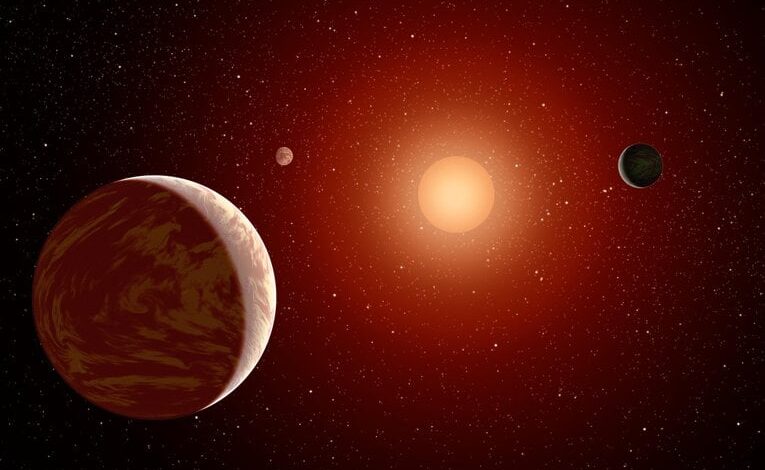Researchers Explore Exo-Titans to Unravel Planetary Mysteries

A recent study submitted to the American Astronomical Society journals investigates the potential of exoplanets, specifically exo-Titans, to enhance our understanding of planetary formation and evolution. These exo-Titans are characterized by atmospheres rich in nitrogen and methane, akin to those found on Titan, Saturn’s largest moon. The research focuses on exoplanets orbiting M-dwarf stars, which are smaller and cooler than our Sun, and aims to determine whether these celestial bodies could support life.
Utilizing advanced computer models named Photocem, the research team simulated photochemistry on exo-Titans, particularly analyzing the lifetimes of atmospheric methane. The models also considered the presence of hydrogen, nitrogen, oxygen, and carbon. To anchor their findings, the researchers treated the exoplanet TRAPPIST-1e as an exo-Titan, given its orbit around an M-dwarf star.
The study’s findings indicate that methane on TRAPPIST-1e would have a very short atmospheric lifetime. Researchers estimated a detection probability for a warm exo-Titan at between 1 to 10 percent. The study highlights that, “This finding is consistent with recent JWST nondetections of CH4-dominated atmospheres on warm terrestrial exoplanets.” The team emphasized that the standard of proof required for claiming a warm exo-Titan detection is substantial, suggesting that the observation of oxidized carbon species would support such a claim. Confirmed detections could prompt a re-evaluation of our understanding of Titan-like worlds.
Significance of M-Dwarf Stars
TRAPPIST-1e was chosen for this study due to its location within the habitable zone of an M-dwarf star, which has garnered increasing attention for its potential to host habitable exoplanets. Notably, TRAPPIST-1e completes an orbit in just 6.1 days, a stark contrast to Mercury’s 88-day orbit. The longer lifetimes of M-dwarf stars, which may extend to trillions of years compared to the Sun’s approximate 10 billion-year lifespan, could provide ample time for their exoplanets to develop life-sustaining conditions.
The research team selected Titan as an analog for their models, given its rich biosignatures, including nitrogen and methane. Titan has long been considered a prime target for astrobiological research, with studies suggesting it may replicate conditions present on ancient Earth. Although Titan orbits well beyond the habitable zone of our Sun, an exo-Titan within an M-dwarf star’s habitable zone could present a unique opportunity for the search for extraterrestrial life.
Future of Exoplanet Research
The implications of this study suggest that if the low probability of finding a warm exo-Titan holds true, the likelihood of discovering life on such planets may also be diminished. This research emerges alongside the confirmation of over 6,000 exoplanets and NASA’s plans to deploy the Dragonfly quadcopter to Titan, scheduled for launch in July 2028 with an arrival date anticipated in 2034.
Research like this is crucial for expanding our understanding of the universe’s exoplanets and their potential habitability. As scientists continue to explore the cosmos, the quest for knowledge about exo-Titans and their atmospheres will likely yield new discoveries that could reshape our understanding of life beyond Earth.






